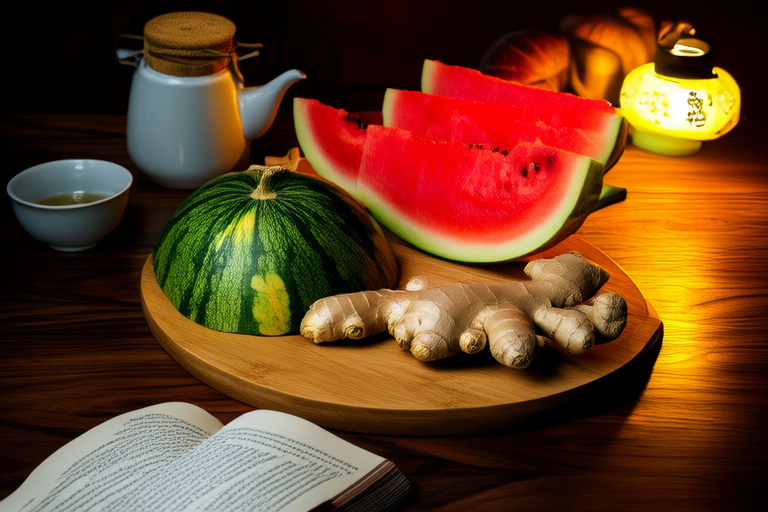Seasonal Strategies: Mastering Health Preservation Across the Four Seasons
Introduction: Aligning with Nature’s Rhythms
The changing seasons bring more than just shifts in weather; they influence our bodies, minds, and overall well-being. Adapting our health practices to align with these seasonal transitions is essential for maintaining balance and vitality throughout the year. Ancient wisdom traditions, such as Traditional Chinese Medicine (TCM) and Ayurveda, have long emphasized the importance of living in harmony with nature’s cycles. Modern science also supports this approach, showing that seasonal changes can affect everything from our immune system to our mood and energy levels.
In this article, we will explore practical strategies for preserving health across the four seasons—spring, summer, autumn, and winter. By tailoring dietary choices, physical activities, mental health practices, and preventive measures to each season, you can optimize your well-being and thrive no matter the time of year.
Spring: Awakening and Renewal
Dietary Recommendations
Spring is a time of renewal and growth, making it ideal for detoxifying the body and embracing fresh, vibrant foods. Focus on incorporating leafy greens like spinach, kale, and dandelion greens, which are rich in antioxidants and support liver health. Citrus fruits, such as lemons and oranges, can help cleanse the body and boost immunity. Incorporate sprouts, asparagus, and herbs like parsley and cilantro, which are abundant in spring and promote vitality.
Physical Activities
As the days grow longer and warmer, take advantage of outdoor activities to awaken your body after winter’s dormancy. Walking, jogging, or cycling in nature can invigorate your senses and improve circulation. Consider practicing yoga or tai chi, both of which emphasize gentle movement and mindfulness, helping you reconnect with your body and the natural world.
Mental Health Tips
Spring’s energy encourages new beginnings, so use this time to set intentions and declutter your mind. Journaling or meditation can help process emotions and foster clarity. Spend time outdoors to soak up natural light, which can alleviate feelings of sluggishness and uplift your mood. Engaging in creative pursuits, such as gardening or painting, can also channel spring’s rejuvenating energy.
Preventive Measures
Spring allergies are common, so take steps to minimize exposure to pollen by keeping windows closed during peak hours and washing your face and hands after being outside. Boost your immune system with probiotic-rich foods like yogurt or fermented vegetables to combat seasonal illnesses.
Summer: Embracing Vitality and Balance
Dietary Recommendations
Summer’s heat calls for cooling, hydrating foods to prevent overheating and dehydration. Enjoy water-rich fruits like watermelon, cucumbers, and berries, along with salads made from crisp vegetables such as lettuce, zucchini, and bell peppers. Herbal teas, such as mint or chamomile, can provide refreshing hydration while calming the body.
Physical Activities
Take advantage of the warm weather by engaging in water-based activities like swimming or paddleboarding, which are excellent for cardiovascular health and muscle toning without straining the joints. Early morning or late evening workouts are preferable to avoid the midday sun. Outdoor group sports, hiking, or even dancing under the stars can make exercise fun and social.
Mental Health Tips
Longer daylight hours offer opportunities to connect with loved ones and enjoy leisurely evenings. Practice gratitude by reflecting on the joys of summer, whether it’s a sunset, a picnic, or laughter with friends. Mindfulness exercises, such as deep breathing or guided imagery, can help manage stress and maintain emotional equilibrium despite the fast pace of summer schedules.
Preventive Measures
Protect your skin from harmful UV rays by wearing sunscreen and protective clothing. Stay hydrated by drinking plenty of water throughout the day, and avoid excessive alcohol or caffeine consumption, which can dehydrate the body. Be mindful of food safety when dining outdoors, ensuring proper storage and refrigeration to prevent spoilage.
Autumn: Transition and Grounding
Dietary Recommendations
As temperatures drop, focus on warming, nourishing foods that prepare your body for colder months ahead. Root vegetables like carrots, sweet potatoes, and beets are excellent choices, as are whole grains such as oats and quinoa. Incorporate warming spices like ginger, cinnamon, and turmeric into soups and stews to support digestion and immunity.
Physical Activities
Autumn’s crisp air makes it perfect for moderate-intensity exercises like brisk walking, hiking, or Pilates. These activities not only strengthen the body but also allow you to appreciate the beauty of fall foliage. Indoor workouts, such as strength training or yoga, can complement outdoor activities and ensure consistency as the weather becomes less predictable.
Mental Health Tips
Autumn often brings a sense of reflection and introspection. Use this time to establish routines that promote stability and calm. Meditation or journaling can help process any lingering emotions from the busy summer months. Creating cozy spaces at home with soft lighting and comforting scents can enhance relaxation and foster a sense of security.
Preventive Measures
With flu season approaching, prioritize immune-boosting habits such as adequate sleep, regular handwashing, and consuming nutrient-dense foods. Dress in layers to adapt to fluctuating temperatures, and consider getting a flu shot if recommended by your healthcare provider.
Winter: Rest and Restoration
Dietary Recommendations
Winter calls for hearty, warming meals that provide sustained energy and comfort. Focus on protein-rich foods like beans, lentils, and lean meats, paired with healthy fats from avocados, nuts, and seeds. Bone broth is particularly beneficial, offering nutrients that support gut health and immunity. Seasonal produce like squash, Brussels sprouts, and citrus fruits can add variety and nutrition to your diet.
Physical Activities
While winter may tempt you to hibernate, staying active is crucial for maintaining energy levels and preventing stiffness. Indoor exercises like yoga, Pilates, or home workouts can keep you moving without braving the cold. If possible, embrace winter sports such as skiing, snowshoeing, or ice skating, which combine fitness with fun.
Mental Health Tips
Shorter days and limited sunlight can contribute to seasonal affective disorder (SAD) or general feelings of lethargy. Combat these effects by using a light therapy lamp, spending time near windows, or taking short walks during daylight hours. Cultivate inner warmth through self-care rituals like reading, taking baths, or practicing mindfulness. Connecting with loved ones virtually or in person can also lift spirits during the darker months.
Preventive Measures
Winter’s dry air can irritate the respiratory system, so use a humidifier to maintain optimal indoor humidity levels. Wash your hands frequently to reduce the spread of germs, and prioritize restorative sleep to bolster your immune defenses. Layered clothing and insulated footwear will help protect against frostbite and hypothermia during outdoor excursions.
Conclusion: Thriving Through Seasonal Harmony
Aligning your lifestyle with the rhythms of nature offers profound benefits for physical, mental, and emotional well-being. By adapting your diet, exercise routine, mental health practices, and preventive measures to each season, you can navigate life’s transitions with resilience and grace. Spring invites renewal, summer celebrates vitality, autumn fosters grounding, and winter encourages restoration—all contributing to a holistic approach to health preservation.
Embrace the wisdom of the seasons, and let their unique qualities guide you toward a balanced and fulfilling life. Whether you’re savoring a bowl of hearty stew in winter or basking in the golden glow of a summer sunset, remember that nature provides everything you need to thrive. By honoring its cycles, you honor yourself.










